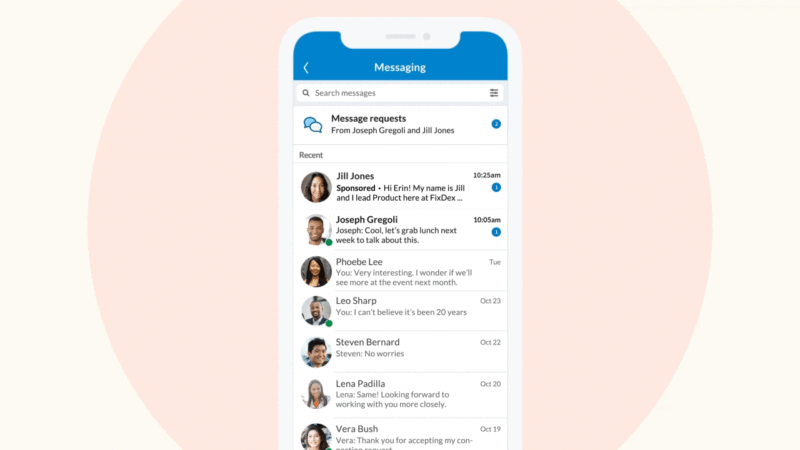LinkedIn rolls out Conversation Ads, aimed at to improving personalization in messaging
The new format will be rolling out in beta to all advertisers over the next few weeks.
Conversation Ads are coming to LinkedIn. The ad format builds on LinkedIn’s current Message Ads (formerly Sponsored InMail), featuring full-funnel campaigns with options for multiple customized calls-to-action such as product education, webinar sign-ups, or eBook downloads.
The new ad product will be rolling out globally in beta to all advertisers over the next few weeks, LinkedIn said Tuesday.
Here’s what Conversation Ads look like:
In-the-moment relevance. The ad format is designed for real-time engagement, which means messages can only be sent when the prospect is active on LinkedIn. Advertisers can use Conversation Ads alongside other features – like Lead Gen Forms and Conversation Tracking – to help move the needle closer to a conversion.
Campaign setup. To get started with Conversation Ads, advertisers can select one of the two following objectives: Website Visits or Lead Generation. Detailed click reporting and demographic reporting for the ad type will be available in the Campaign Manager. It’s unclear if there is a limit to the delivery frequency (like with the former InMail unit).
Brand use case. Job search marketplace Hired said it found success with the new format. “Hired saw a big uptick in quality candidates entering the system,” said Chase Gladden, Hired’s growth marketing manager. “The clickthrough rate was almost five times higher than what we’d seen previously, which goes to show the level of engagement is pretty wild when you’re able to provide multiple opportunities to click.”
Why we care. Conversation Ads let customers choose their own path based on the CTA that’s most relevant to them – like registering for a webinar or downloading a white paper. Plus, these ads are only sent to currently active LinkedIn members, which can increase the likelihood of engagement.
The new format can be especially beneficial for B2B advertisers with longer purchase cycles and multiple stakeholders involved in buying decisions. The ads allow customers to access the content that’s most relevant to their current stage in the journey.
Contributing authors are invited to create content for MarTech and are chosen for their expertise and contribution to the search community. Our contributors work under the oversight of the editorial staff and contributions are checked for quality and relevance to our readers. MarTech is owned by Semrush. Contributor was not asked to make any direct or indirect mentions of Semrush. The opinions they express are their own.
Related stories
